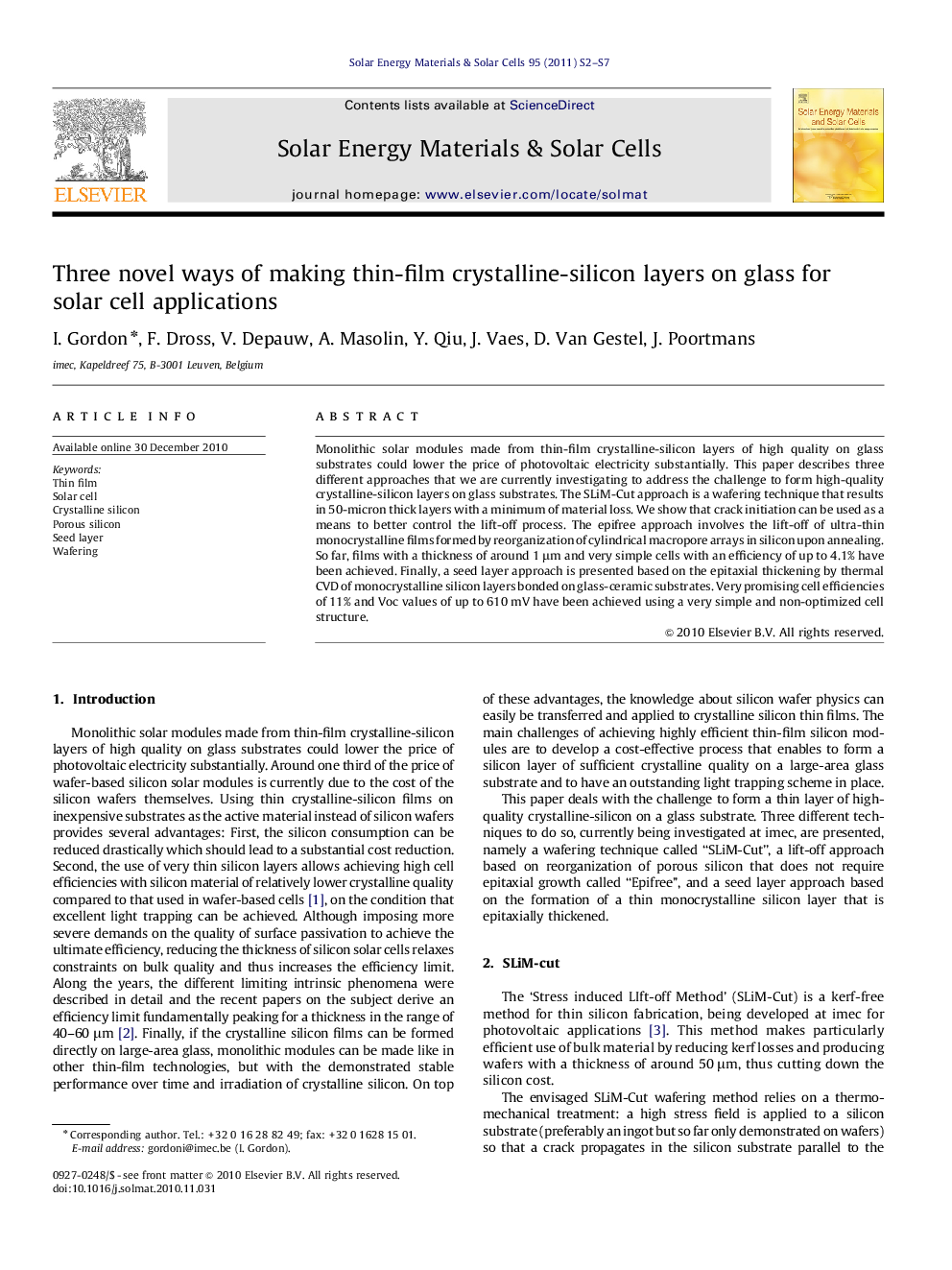| Article ID | Journal | Published Year | Pages | File Type |
|---|---|---|---|---|
| 79379 | Solar Energy Materials and Solar Cells | 2011 | 6 Pages |
Monolithic solar modules made from thin-film crystalline-silicon layers of high quality on glass substrates could lower the price of photovoltaic electricity substantially. This paper describes three different approaches that we are currently investigating to address the challenge to form high-quality crystalline-silicon layers on glass substrates. The SLiM-Cut approach is a wafering technique that results in 50-micron thick layers with a minimum of material loss. We show that crack initiation can be used as a means to better control the lift-off process. The epifree approach involves the lift-off of ultra-thin monocrystalline films formed by reorganization of cylindrical macropore arrays in silicon upon annealing. So far, films with a thickness of around 1 μm and very simple cells with an efficiency of up to 4.1% have been achieved. Finally, a seed layer approach is presented based on the epitaxial thickening by thermal CVD of monocrystalline silicon layers bonded on glass-ceramic substrates. Very promising cell efficiencies of 11% and Voc values of up to 610 mV have been achieved using a very simple and non-optimized cell structure.
Graphical AbstractFigure optionsDownload full-size imageDownload as PowerPoint slide
